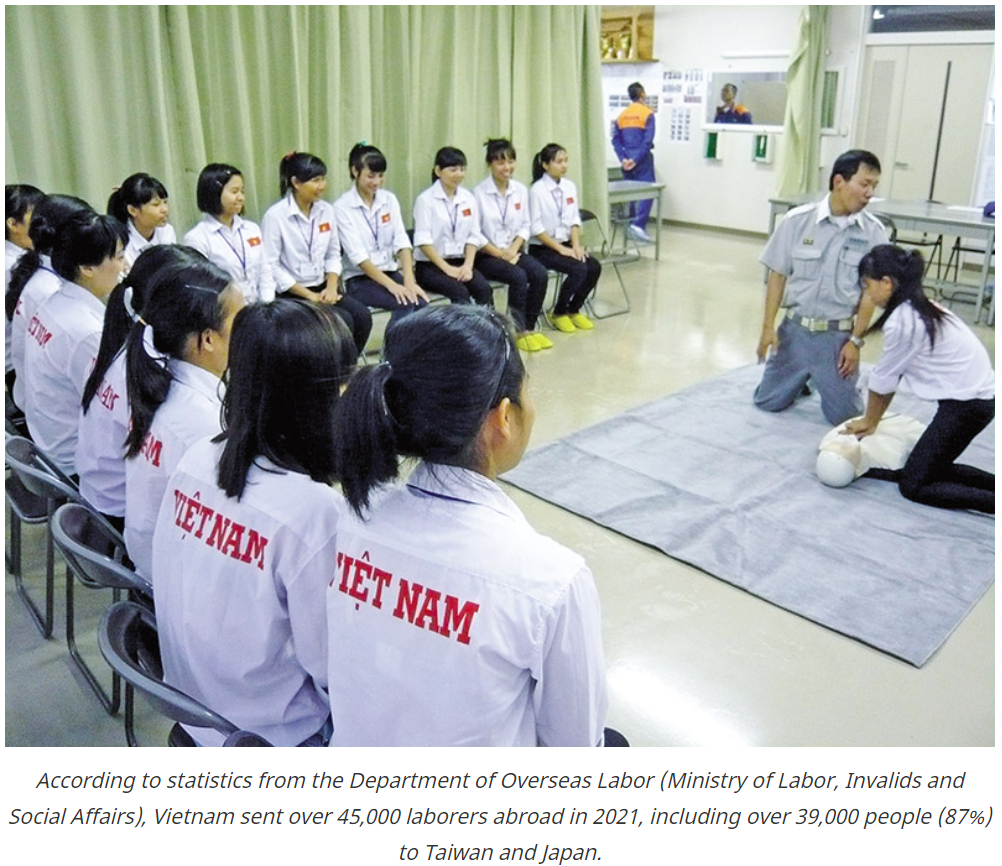Vietnam: Labor export companies face shortages in personnel supply, overseas markets
Vietnamese manpower exporters are happy that some countries have reopened for foreign workers. However, after two years, many problems need to be addressed.
Taiwan has announced that it will receive foreign workers again from mid-February. Recently, the Japanese Government also announced the possibility of reopening to foreign workers in March, but it is not known exactly when nor the quantity and requirements. Vietnamese labor exporting companies are closely watching the moves of Japanese authorities in this regard.
Several labor exporters expressed concern that Japan might postpone the time of receiving foreign workers. In November 2021, Japan planned to reopen its door to foreign workers, but then closed. However, Vietnamese labor exporting firms hope that this time Japan will open because many Japanese businesses are impatient because of labor shortages.
Currently, Japan and Taiwan are the two largest markets for Vietnamese workers. In 2021, the total number of Vietnamese to these two markets to work accounted for 87% of the total number of Vietnamese workers going abroad.
In early February 2022, Taiwanese authorities announced the reception of foreign workers to Taiwan phase II, from February 15, 2022. In order to send workers to Taiwan, labor export firm must comply with the pandemic prevention measures of Taiwan.
The Japanese Government has announced that it will ease entry restrictions, allowing interns to enter the country, including Vietnamese interns, and will increase the maximum number of people entering the country per day from 3,500 to 5,000 from March, going along with regulations on pandemic prevention.
Mr. Doan Mau Diep, Chairman of the Vietnam Association of Manpower Supply (VAMAS), said that Vietnam’s labor export in 2022 may be better than in 2021. Currently, foreign markets are gradually reopening and if the market situation is favorable, it is possible that Vietnam can send 90,000 workers overseas.
However, he believes that in the coming time, labor export will not increase as strongly as in previous period. Currently, Vietnam has about 300,000 to 400,000 new workers each year, much lower than in previous 10 years when there were about 1.2 million new workers each year. Meanwhile, domestic labor demand is also very high. Domestic enterprises are short of labor and often need to recruit workers, so laborers now have more options.
In this context, Diep said, Vietnam needs to develop a strategy to ensure human resources serve domestic development needs. As for labor export, Vietnam should choose high-quality labor markets and improve skills for Vietnamese workers to increase value.
According to statistics from the Department of Overseas Labor (Ministry of Labor, Invalids and Social Affairs), Vietnam sent over 45,000 laborers abroad in 2021, including over 39,000 people (87%) to Taiwan and Japan.
Besides Taiwan, Japan and South Korea, China is also the main labor market of Vietnam. The Ministry of Labor, Invalids and Social Affairs and manpower exporting businesses are actively expanding to other markets such as Eastern and Western Europe, Russia, Australia and Israel.
Dau Tu
Source: https://vietnamnet.vn/en/business/labor-export-companies-face-shortages-in-personnel-supply-overseas-markets-821135.html


 Thailand
Thailand




